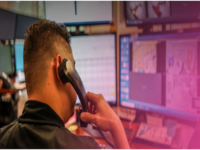When Remote Wound Care Is Necessary

In recent years, telemedicine has revolutionized the way healthcare is delivered, making it possible for patients to receive expert care without leaving their homes. One area where this innovation is making a significant impact is wound care. Remote wound care, also known as telewound care, allows patients to consult with wound specialists, receive monitoring, and get tailored treatment plans virtually. But when is remote wound care truly necessary? In this article, we’ll explore the circumstances, benefits, and considerations for choosing remote wound care, helping patients and providers make informed decisions.
What Is Remote Wound Care?
Remote wound care uses digital technologies—such as video calls, secure messaging, and mobile apps—to connect patients with healthcare providers specializing in wound management. This approach can involve sending photos of wounds, discussing symptoms, and developing treatment plans, all without an in-person visit. Remote wound care is ideal for people who need ongoing monitoring, timely medical advice, and quick adjustments to their care plans.
When Is Remote Wound Care Necessary?
There are several scenarios in which remote wound care becomes not just a convenience, but a necessity. Understanding these situations can help patients access care promptly and avoid complications.
- Geographical Barriers: Patients living in rural or remote areas often have limited access to wound care specialists. Traveling long distances for appointments can be burdensome and delay critical treatment. Remote wound care bridges this gap, allowing access to expert consultations regardless of location.
- Mobility Issues: Individuals with limited mobility—such as the elderly, those with physical disabilities, or those recovering from surgery—may struggle to visit clinics regularly. Telewound care enables them to receive professional guidance from home, reducing the risk of missed appointments and allowing early intervention if complications arise.
- Chronic Wounds and Frequent Monitoring: Chronic wounds, including diabetic ulcers, pressure sores, and venous leg ulcers, often require continuous monitoring. Remote wound care makes it possible to check healing progress, adjust treatments, and provide timely advice without the need for frequent in-person visits.
- Infectious Disease Outbreaks: During times of pandemics or local outbreaks, minimizing in-person contact is essential to reduce the risk of infection. Remote wound care offers a safe alternative, ensuring patients still receive necessary attention while adhering to public health guidelines.
- Postoperative Follow-up: After wound-related surgeries, remote care can provide regular follow-up, monitor for complications, and ensure proper healing. This can be particularly valuable for patients who live far from surgical centers or those with transportation challenges.
- Urgent Expert Consultation: Sometimes, a wound may worsen suddenly, or new symptoms may emerge that require immediate attention. Remote consultations allow patients to get rapid expert advice, potentially preventing complications or unnecessary emergency room visits.
Benefits of Remote Wound Care
Remote wound care offers many advantages for patients and providers alike. Here are some key benefits:
- Convenience and Accessibility: Patients can receive care from the comfort of their homes, avoiding travel and long waits.
- Timely Interventions: Quick access to specialists means earlier identification of problems and prompt treatment adjustments.
- Cost Savings: Remote visits can reduce transportation costs and minimize time away from work or family.
- Comprehensive Documentation: Digital platforms often include tools for tracking wound progression, which can improve communication and outcomes.
- Reduced Infection Risk: Especially important for immunocompromised individuals, remote care minimizes exposure to healthcare environments.
How Remote Wound Care Works
The process usually starts with an initial virtual assessment, where patients provide medical history and wound images. Providers use secure platforms to evaluate the wound, offer guidance on cleaning and dressing, prescribe medications if needed, and schedule follow-up video calls or messaging check-ins. Some services may integrate wearable sensors or mobile apps that track wound healing and alert providers if conditions change.
Collaboration between local caregivers, such as home health nurses, and remote specialists is common. This team-based approach ensures patients receive hands-on care when necessary, supplemented by expert oversight.
Limitations and When In-Person Care Is Required
While remote wound care is highly effective in many scenarios, it has limitations. Severe wounds, uncontrolled bleeding, signs of systemic infection (fever, chills, rapid heart rate), or wounds requiring surgical intervention require immediate in-person medical attention. Remote care should never replace emergency services in life-threatening situations.
Providers typically assess whether a wound can be managed remotely or if a physical examination is essential. In many cases, remote care complements in-person visits, offering ongoing support between appointments.
Tips for Maximizing Remote Wound Care Success
- Take clear, high-quality photos of the wound in good lighting.
- Keep a daily log of wound symptoms, changes, and treatments.
- Follow all instructions from your healthcare provider carefully.
- Report any new or worsening symptoms immediately.
- Ensure you have reliable internet and understand how to use telehealth platforms.
Conclusion
Remote wound care is transforming the management of wounds for many patients, offering convenience, timely intervention, and improved outcomes. It is especially necessary for those facing barriers to traditional care, needing frequent monitoring, or seeking to minimize exposure during infectious outbreaks. By understanding when remote wound care is the best option, patients and providers can work together to ensure effective, safe, and personalized treatment plans. For anyone unsure whether telewound care is right for them, consult with a healthcare professional to determine the best approach for your unique needs.






